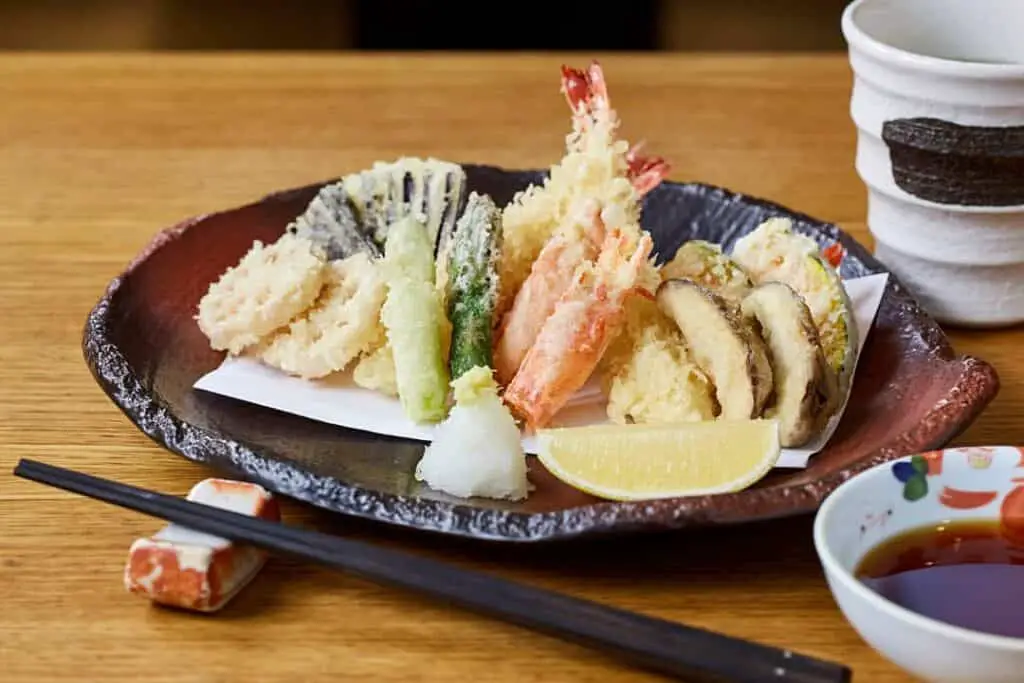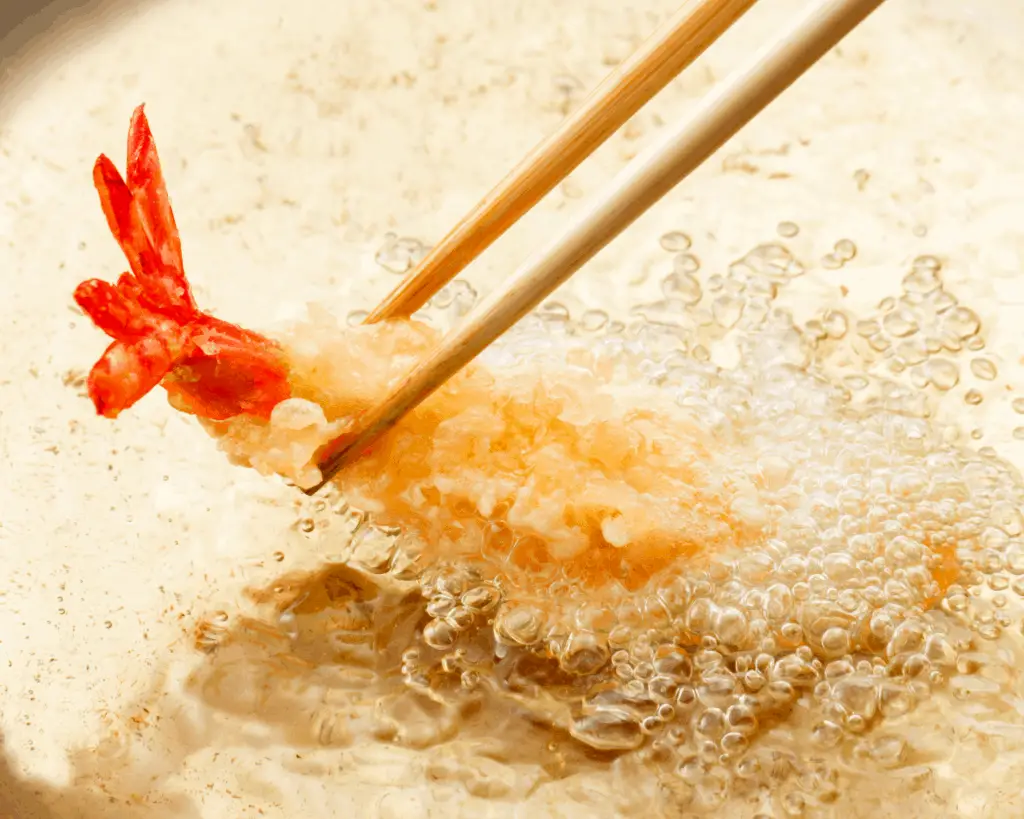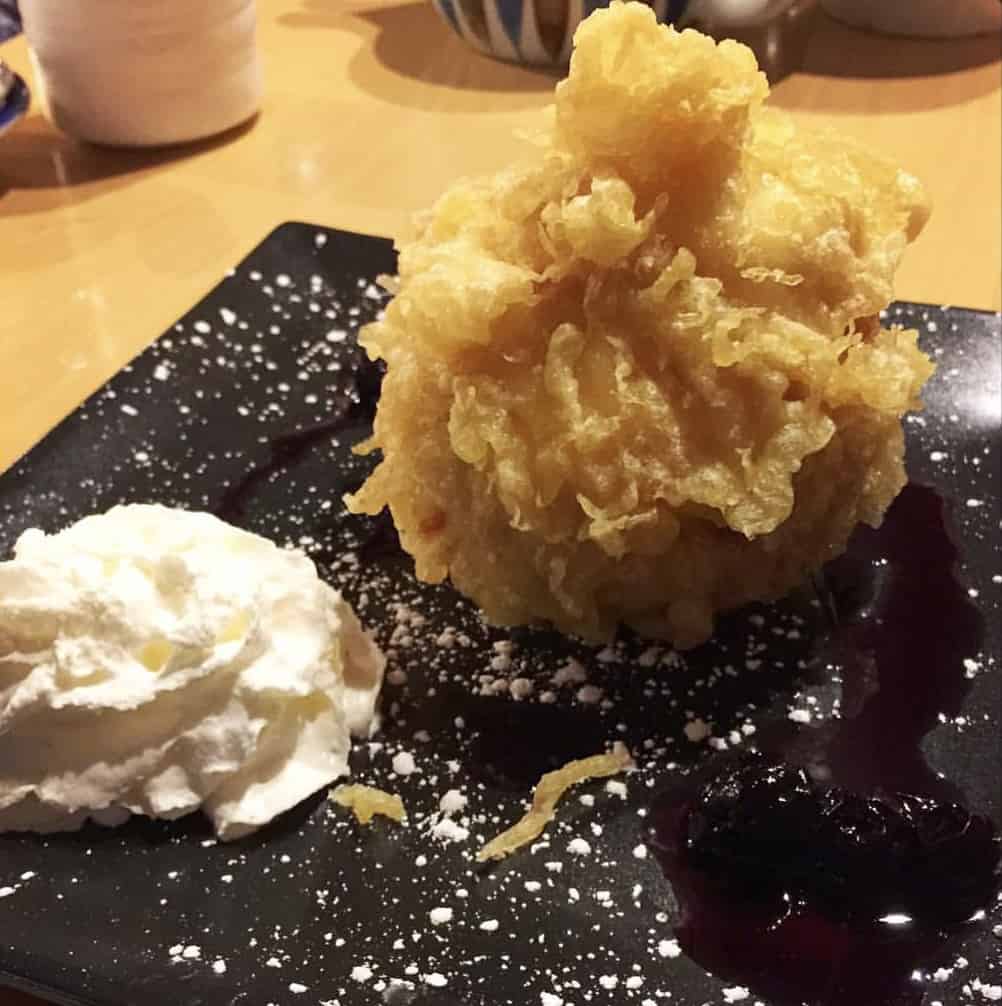Japanese cuisine is one of the most recognizable in the world, but there’s a lot more to it than sushi, which is one of the most recognizable forms of food in the world. However, there are plenty of other delicious Japanese cooking techniques, including tempura, but is tempura shrimp?
Tempura is not necessarily shrimp. Tempura can be made with several base ingredients, though shrimp is one of the most common ones. Tempura can be made with a wide range of seafood or vegetables, including prawn, squid, white fish, pollock, bell pepper, ginger, onion, and quite a lot more.


However, there’s a lot more to know about what you can make tempura out of than I can fit into a few sentences. I’ll take a brief look at the ingredients that have been used in tempura as well as the history of it in Japanese cuisine.
Is Tempura Shrimp?
It’s reasonable to assume that tempura is shrimp because the most common form of tempura is ebi (shrimp) tempura. However, this doesn’t actually mean that tempura is shrimp by default since there are plenty of other ingredients that can be used in a tempura, even including vegetables.
Other kinds of seafood that can be used in tempura include prawn, squid, scallop, crab, and much more. Vegetables include various types of mushrooms, ginger, onion, and even potato. The vast majority of ingredients that are used in Japanese cuisine can be used in tempura.
So what does tempura mean if it doesn’t apply to the ingredients that are used in the dish in the first place? Tempura actually refers to the method that is used to cook the food and not any of the ingredients.

A tempura consists of an ingredient that has been battered with a mixture of eggs, ice water, flour (this is why tempura has gluten), and sometimes baking powder. This batter is typically kept chunky to ensure that it results in the characteristic fluffiness that diners have come to expect from tempura dishes.
After the ingredients have been battered, tempura is then fried in oil. The kind of oil you use for tempura depends on your personal preference, but sesame oil is the traditional option. If you’re not a fan of the intense flavor that sesame oil gives food, you can also use canola oil, corn oil, or avocado oil.
For a traditional tempura, the ingredients are only fried until they’re pale and fluffy, ensuring that the recipe doesn’t result in an overpowering deep fried flavor. This is key in tempura, since you still want to enjoy the lighter notes of the fried batter without losing the taste of the underlying ingredients.
Unusual Ingredients Used as Tempura Bases

While seafood and vegetables tend to be the most common ingredients in tempura because they mesh well with its fried flavor, they aren’t the only options. More adventurous restaurants have started using unusual ingredients in their tempuras, and many of them have some merit to them.
Fruits like bananas are popular when fried up in the form of tempura, but they aren’t the only sweet ingredients used as tempura bases. If you’re a fan of mixing sweet and salty ingredients, you’ll probably enjoy tempura ice cream, which is growing in popularity.
There’s even nori tempura, which is tempura made out of sheets of dried seaweed. These tend to have a flavor reminiscent of the ocean and they’re a little healthier if you’re trying to lose some weight. In many cases, you’ll get these more unusual forms of tempura from streetside tempura stands.
Where Does the Term “Tempura” Come From?
Tempura originated from Portuguese missionaries that visited Japan during the 16th century. When they brought their religion over with them, they also brought a taste of their cuisine that has since developed into tempura. In fact, even tempura’s name comes from the latin word “tempora.”
This word was used to refer to Lent, during which the missionaries avoided eating red meat, opting instead for fish and vegetables. Over time, the term was used repeatedly in southern Japan, until it became tempura and not tempora.
A common way to prepare fish and vegetables for the missionaries was battering and deep frying them, which inspired the native Japanese to take to the cooking method as well.
It is assumed that the base dish that tempura was based on was the Portuguese peixinhos da horta, which translates to “fish of the garden.” However, this dish isn’t actually seafood-based, as it consists of deep-fried green beans.